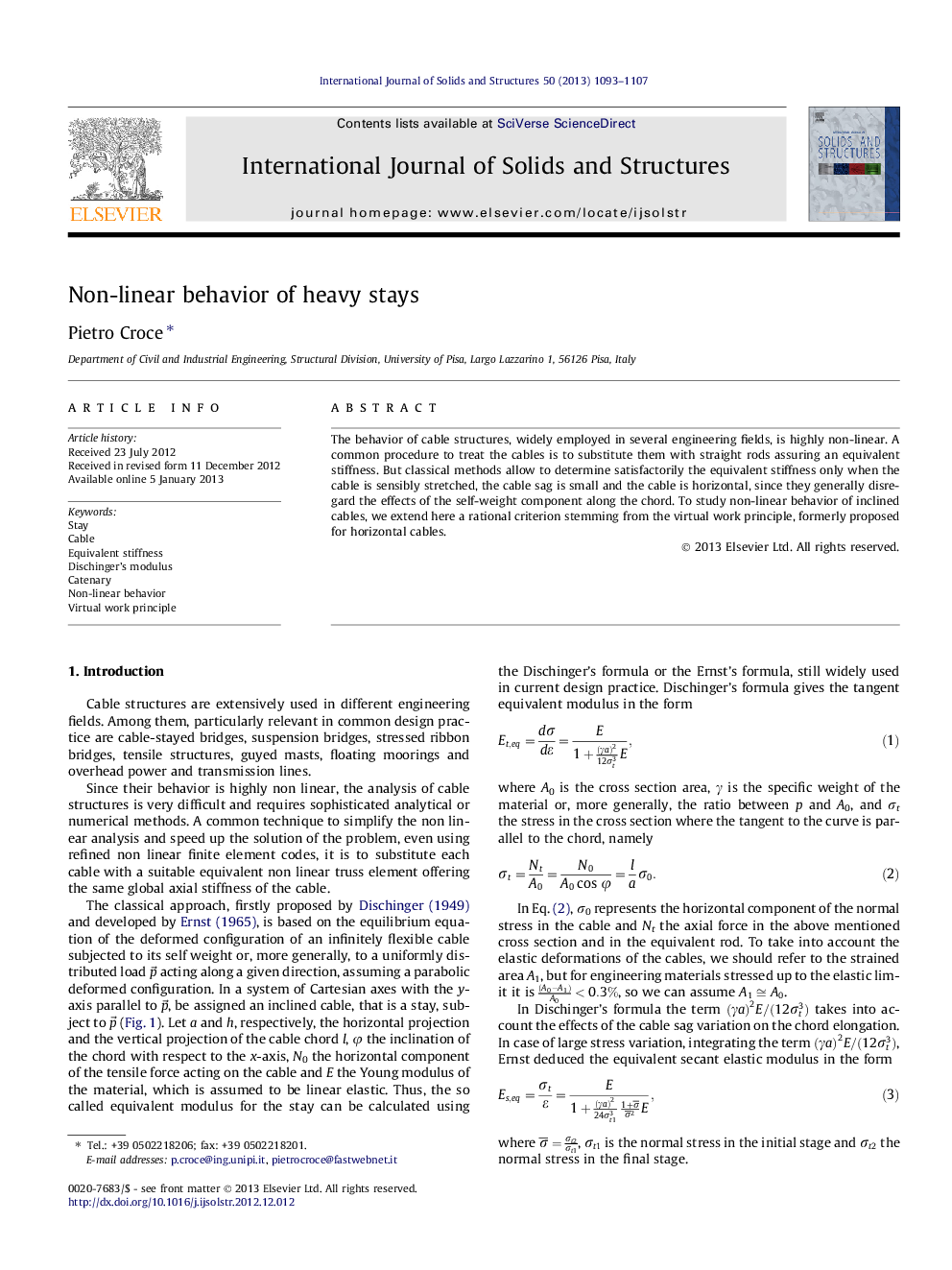| Article ID | Journal | Published Year | Pages | File Type |
|---|---|---|---|---|
| 277998 | International Journal of Solids and Structures | 2013 | 15 Pages |
The behavior of cable structures, widely employed in several engineering fields, is highly non-linear. A common procedure to treat the cables is to substitute them with straight rods assuring an equivalent stiffness. But classical methods allow to determine satisfactorily the equivalent stiffness only when the cable is sensibly stretched, the cable sag is small and the cable is horizontal, since they generally disregard the effects of the self-weight component along the chord. To study non-linear behavior of inclined cables, we extend here a rational criterion stemming from the virtual work principle, formerly proposed for horizontal cables.
► We use principle of virtual works to study non-linear behavior of heavy stays. ► We propose a closed form solution considering the along the chord self-weight component. ► We obtain two expressions of the equivalent stiffness depending on the end restraints of the cable. ► We demonstrate that classical Dischinger formula overestimates the actual stay stiffness. ► We discuss how the equivalent stay stiffness varies using different cable materials.
